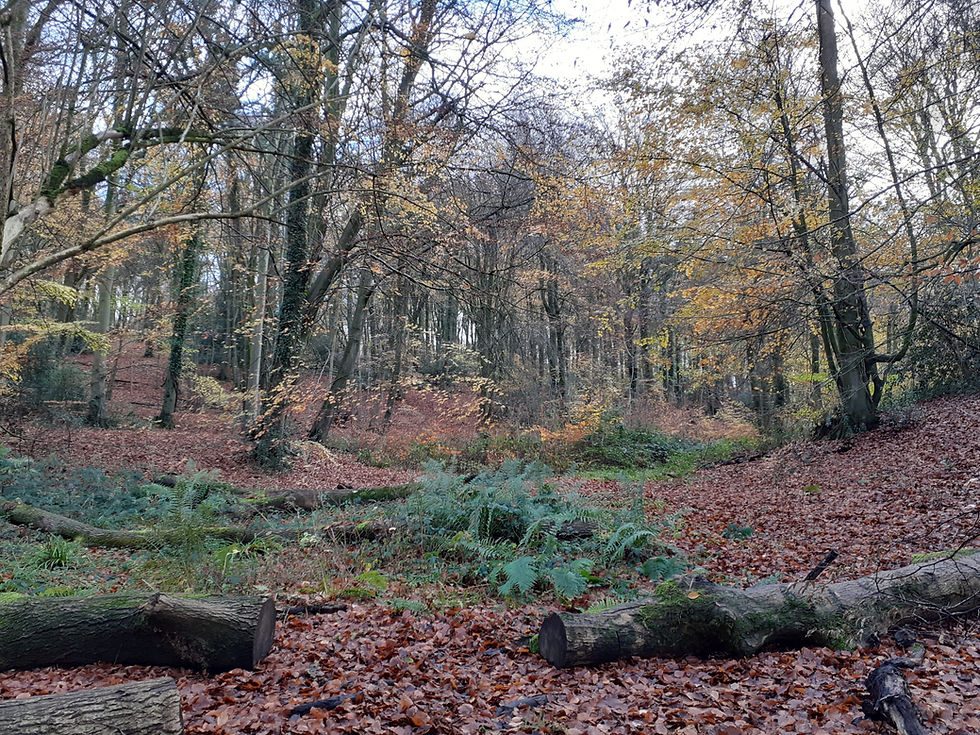10 Fun Facts About Trees
- Lindsey Shakespeare

- Apr 28
- 3 min read

Fact #1 A Late Arrival to the Party
Trees as we know them today would not have been present for the first 90% (roughly 4 billion years) of Earth's history. Earth is estimated to be 4.5 billion years old, and plants, including mosses and liverworts, may have colonized land as recently as 470 million years ago. Vascular plants, with more developed systems for transporting water and nutrients, followed about 420 million years ago, however, trees as we know them today, evolved much later, around 370 million years ago.
Fact #2 Everywhere... Almost
Trees grow on six of seven continents, with the current harsh and cold climate of Antarctica being the only exception.
Fact #3 Back from the Dead...
It was generally believed that the Wollemi pine species itself had become extinct, possibly between 70 and 90 million years ago. In 1994, a group of living Wollemi pine trees were discovered in a remote gorge in Australia. This discovery was a major scientific event and is considered one of the greatest botanical discoveries of our time. While the family lineage is ancient, the specific living species was thought to be extinct for millions of years before its rediscovery. Since its rediscovery, the Wollemi pine has been classified as critically endangered due to its limited wild population and vulnerability to threats like disease and wildfires.
Fact #4 A Shower of Leaves and Treasure
A large, mature oak tree can indeed drop around 10,000 acorns in a year and produce roughly 500,000 leaves annually. This large number of acorns is part of the "mast year" phenomenon, where oak trees produce a bumper crop to ensure some acorns survive to become new trees. While the number of leaves is an estimate, it reflects the significant size and growth of a mature oak.
Fact #5 Bigger Than You Think
The General Sherman is a giant sequoia (Sequoiadendron giganteum) and is the largest living tree in the world and the largest living organism, by volume, on the planet. It grows in the Giant Forest of Sequoia National Park, California. It’s approximately 83.8m tall and is over 11m in diameter at the base and is approximately 2,100 years old.
Fact #6 Ancient Sentinel of the UK
The oldest tree in the UK is the Fortingall yew in Perthshire, estimated age between 2000 and 3000 years. t's a European yew (Taxus baccata) located in the churchyard of Fortingall. While estimates vary, the Fortingall Yew is generally believed to be between 2,000 and 3,000 years old, making it one of the oldest living organisms in Britain.
Fact #7 Secrets of the Timeless Ones
The Methuselah tree, a Great Basin bristlecone pine, is one of the oldest known living trees on Earth, estimated to be around 4,856 years old, making it the oldest non-clonal tree with a confirmed age. It's located in the White Mountains of California, with its exact location kept secret for protection. While once considered the oldest, a nearby tree discovered in 2012 is estimated to be over 5,060 years old.
Fact #8 Sky-High Giant
The tallest known living tree on Earth is the Hyperion tree, a coast redwood (Sequoia sempevirens) growing in Redwood National Park, California and measures 116.07m in height and, while exact numbers vary, estimates put the number of leaves at over 550 million.
Fact #9 More Than Meets the Eye
There are estimated to be around 73,000 tree species on Earth, with about 9,200 yet to be discovered. A study published in the journal PNAS estimated this number based on global forest surveys and expert opinions, according to University of Leeds[1]. South America is the continent with the highest estimated number of rare tree species (roughly 8,200) and by far the highest number of tree species (at least 31,000).
Fact #10 A Hug a Day...
Spending time in nature and hugging trees can be beneficial for your well-being, both physically and emotionally. Studies suggest that spending time in nature and engaging in activities like tree hugging can reduce stress, lower blood pressure, and even boost the immune system. Additionally, the act of hugging a tree can release oxytocin, a hormone associated with feelings of trust and connection. A study in the Journal of Cardiology (Mao et al., 2012) demonstrated that participants who spent time in forests and hugged trees had lower blood pressure compared to those who did not.
All reference to ages and measurements, correct as of April 2025
These are just some of the fun facts you might learn on one of WildBirch's Guided Woodland Walks! If you're interested in finding out more, take a look at our woodland walks page.



Comments